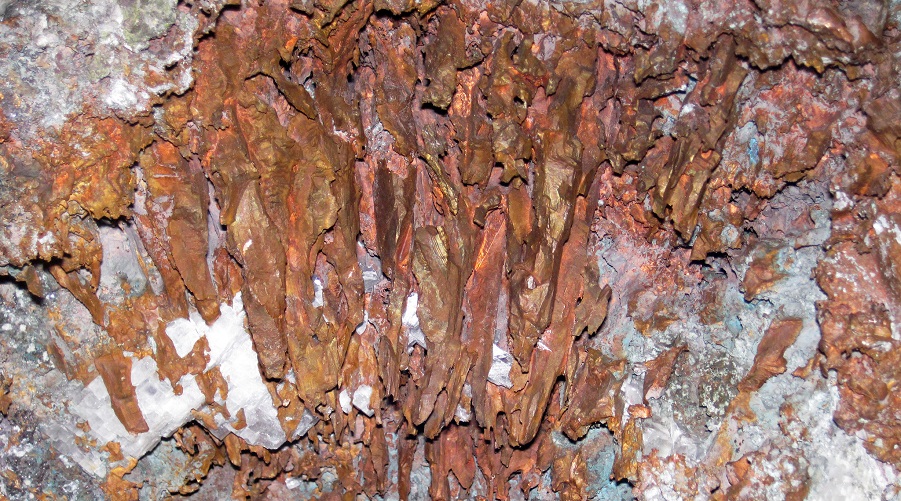|
Copper catalyst may be essential for production of solar fuels from sunlight, water
Thursday, February 23, 2023 - 20:04:33
Mining.com
|

|
The new discoveries were done by capturing the real-time movements of copper nanoparticles, in other words, copper particles engineered at the scale of a billionth of a meter, as they convert CO2 and water into renewable fuels and chemicals: ethylene, ethanol, and propanol, among others.
“This is very exciting. After decades of work, we’re finally able to show—with undeniable proof—how copper electrocatalysts excel in CO2 reduction,” Peidong Yang, a senior faculty scientist in Berkeley Lab’s Materials Sciences and Chemical Sciences Divisions who led the study, said in a media statement. “Knowing how copper is such an excellent electrocatalyst brings us steps closer to turning CO2 into new, renewable solar fuels through artificial photosynthesis.”
The work was made possible by combining a new imaging technique called operando 4D electrochemical liquid-cell STEM (scanning transmission electron microscopy) with a soft X-ray probe to investigate the same sample environment: copper nanoparticles in liquid.
In a paper published in the journal Nature, Yang and his colleagues explain that during 4D-STEM experiments, they used a new electrochemical liquid cell to observe copper nanoparticles (ranging in size from 7 nanometers to 18 nanometers) evolve into active nanograins during CO2 electrolysis—a process that uses electricity to drive a reaction on the surface of an electrocatalyst.
The experiments revealed a surprise: copper nanoparticles combined into larger metallic copper “nanograins” within seconds of the electrochemical reaction.
Facilitating CO2 reduction
To learn more, the team turned to Cheng Wang, who pioneered a technique known as “resonant soft X-ray scattering (RSoXS) for soft materials.” With his help, they used the same electrochemical liquid cell but this time during the experiments to determine whether copper nanograins facilitate CO2 reduction.
Wang explained that soft X-rays are ideal for studying how copper electrocatalysts evolve during CO2 reduction.
The RSoXS experiments —along with additional evidence gathered at Cornell High Energy Synchrotron Source (CHESS)—proved that metallic copper nanograins serve as active sites for CO2 reduction. (Metallic copper, also known as copper(0), is a form of the element copper.)
Yang explained that during CO2 electrolysis, the copper nanoparticles change their structure during a process called “electrochemical scrambling.” The copper nanoparticles’ surface layer of oxide degrades, creating open sites on the copper surface for CO2 molecules to attach. And as CO2 “docks” or binds to the copper nanograin surface, electrons are then transferred to CO2, causing a reaction that simultaneously produces ethylene, ethanol, and propanol along with other multicarbon products.
“The copper nanograins essentially turn into little chemical manufacturing factories,” Yang said.
Further experiments revealed that size matters. All of the 7-nanometer copper nanoparticles participated in CO2 reduction, whereas the larger nanoparticles did not. In addition, the team learned that only metallic copper can efficiently reduce CO2 into multicarbon products.
In Yang’s view, these findings have implications for rationally designing efficient CO2 electrocatalysts.
The new study also validated his findings from 2017: That the 7-nanometer-sized copper nanoparticles require low inputs of energy to start CO2 reduction. As an electrocatalyst, the 7-nanometer copper nanoparticles required a record-low driving force that is about 300 millivolts less than typical bulk copper electrocatalysts.
This means that the copper nanograins could potentially boost the energy efficiency and productivity of some catalysts designed for artificial photosynthesis, a field of research that aims to produce fuels from sunlight, water, and CO2.
http://www.miningnewspro.com/En/News/622701/Copper catalyst may be essential for production of solar fuels from sunlight, water
|